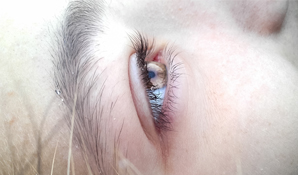When shopping for dread disease cover, you may easily become lost in the detail of waiting periods, illnesses covered and exclusions. We have taken the guesswork out of choosing the best possible cover with this list of questions you should pose to any assurer you’re investigating.
Why dread disease cover?
If you’re already looking, then you’ve probably answered this question. If not, then the answer is that dread disease cover offers you financial protection against serious illnesses that could often cripple you financially.
Thanks to medical advances you are more likely to survive a major health crisis than to die from one, but the irony is that these same medical advances may cost more than you can afford, forcing you to compromise on the treatment you receive and burdening you with financial concerns at an already trying time.
Although reliable South African statistics are difficult to obtain, Cansa reveals that cancer affects 100 000 people a year in South Africa, and that the lifetime risk of a man suffering from prostate cancer – the most common cancer for men – is one in 24, while the risk of a woman contracting breast cancer is one in 33. Increased longevity means more people are susceptible to contracting one of these diseases. Although it’s good news that the odds of surviving these diseases are improving, ill health can place a significant strain on a household’s finances, which is where dread disease cover comes in.
So, here are the questions to ask…
Is there a waiting period on dread disease cover?
Usually there is, so as to prevent people applying for cover when they know that they are likely to claim in the near future. Many people are unaware that there are potentially three waiting periods:
- The first waiting period is the period of time that must pass before your cover comes into effect. During this time you are unable to claim.
- Then there is what is termed the ‘survival period’. This is the length of time a policyholder has to wait after being diagnosed with an illness before a claim is paid out.
- Finally, you should also be aware that the claims process can take time based on the nature of the policy, the reason for the claim, the need for medical tests to confirm diagnosis, and the wait for medical test results. These can sometimes delay a claim pay-out.
Exclusions: will my dread disease policy cover all illnesses?
Any policy you take out should cover you for the ‘big four’ dread diseases, which are cancer, coronary artery bypass, heart attack and stroke. These four dread diseases account for up to 90% of all dread disease claims both in South Africa and internationally.
More comprehensive policies exist with a ‘catch-all’ clause designed to cover all severe illnesses, even if not listed on your policy. This prevents critical illness cover from becoming a game of chance. If it is a question of budget, a policy for the big four will obviously cover you for 90% of risks
In what circumstances might my dread disease insurance claim be rejected?
Non-disclosure of relevant information, whether deliberate or accidental, is the usual cause of rejected claims. Complete and accurate disclosure is critical, if you want to ensure a successful claims experience.
If a client makes a claim for an undisclosed condition, the benefit will either not be paid, or the settlement will be less than expected. Non-disclosure is usually discovered during the claims assessment process.
Will I be paid out the full sum on diagnosis?
To ensure no surprises, make sure you clarify this point. It is an important question to ask of your insurer as the answer varies from company to company and policy to policy. Some policies pay out the full assured amount on diagnosis of a dread disease; others pay out a percentage of the amount, depending on the severity of your illness.
How much should I be insured for?
You will find there is no simple answer to this question. In most cases people take out as much cover as they can afford. Unfortunately, while life cover, disability cover and income protection can each be quantified, no standard formula exists for severe illness cover. We suggest you conduct a full financial needs analysis to calculate the level and type of cover most appropriate to your needs and budget.
On average, the amount of cover bought by policyholders ranges from R500 000 to R1.5 million. Before selecting an amount, you should consider the medical aid cover you have, your level of disability cover as well as your age, because the likelihood of a claim increases as you get older.
How much can I expect premiums to increase by?
In general, this should increase in line with inflation. However, again there is no clear answer: most non-medical costs that dread disease insurance covers grow roughly in line with inflation, but there are some additional medical expenses that have their own, typically higher, medical rate of inflation. This has been about four percentage points higher than consumer inflation over recent years. The annual increase could therefore range anything from 5% to 14%.
How dread disease pay-out works
1Life, like most of the other large insurers, pay a lump-sum for critical illnesses. It is to your advantage to receive the cash upfront, as experience shows, that in a dread disease most of the large expenses are likely to occur early on.
Don’t compromise on the care you need when diagnosed with a serious illness. Find out more about how dread disease cover can protect you against the cost of serious illness.




